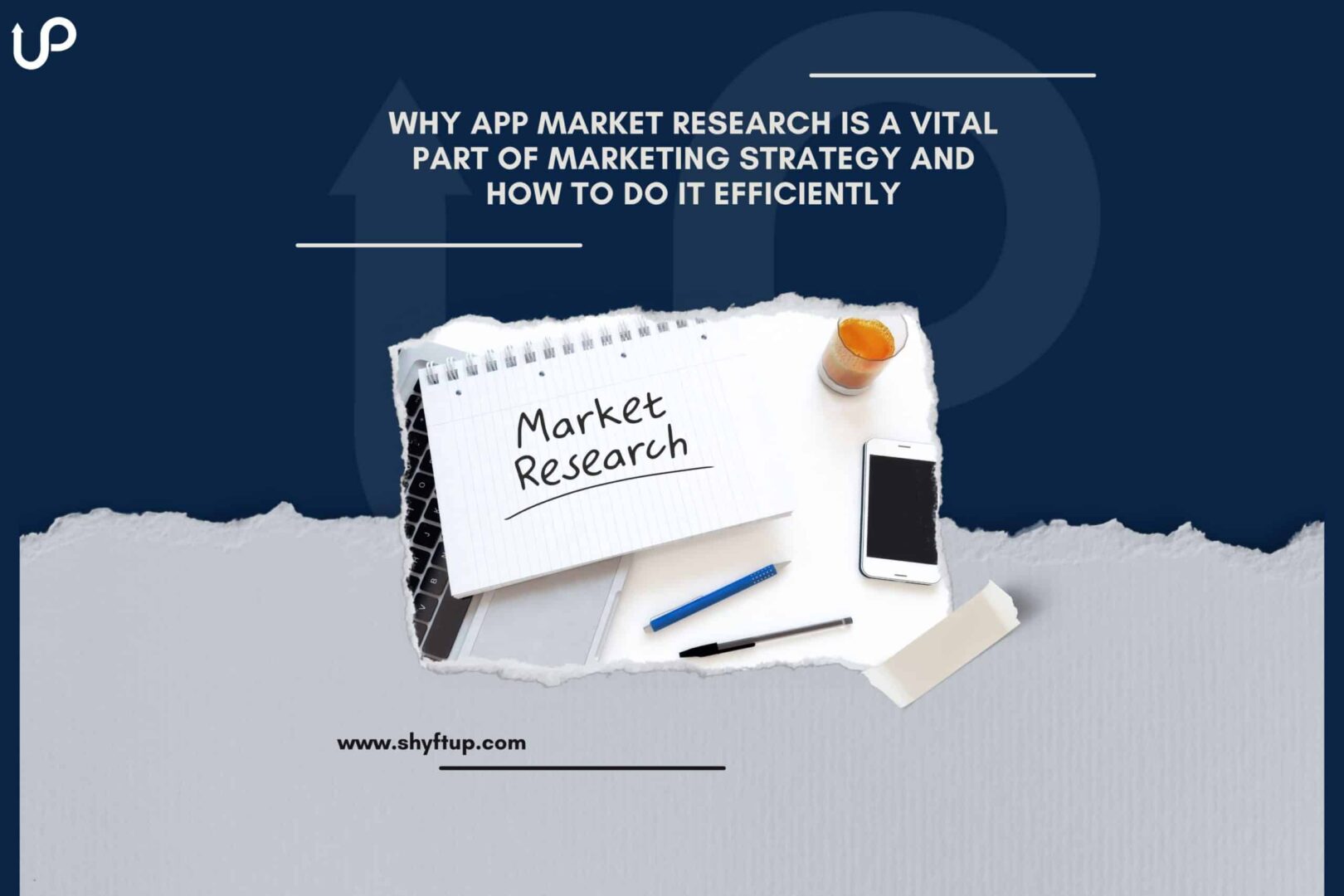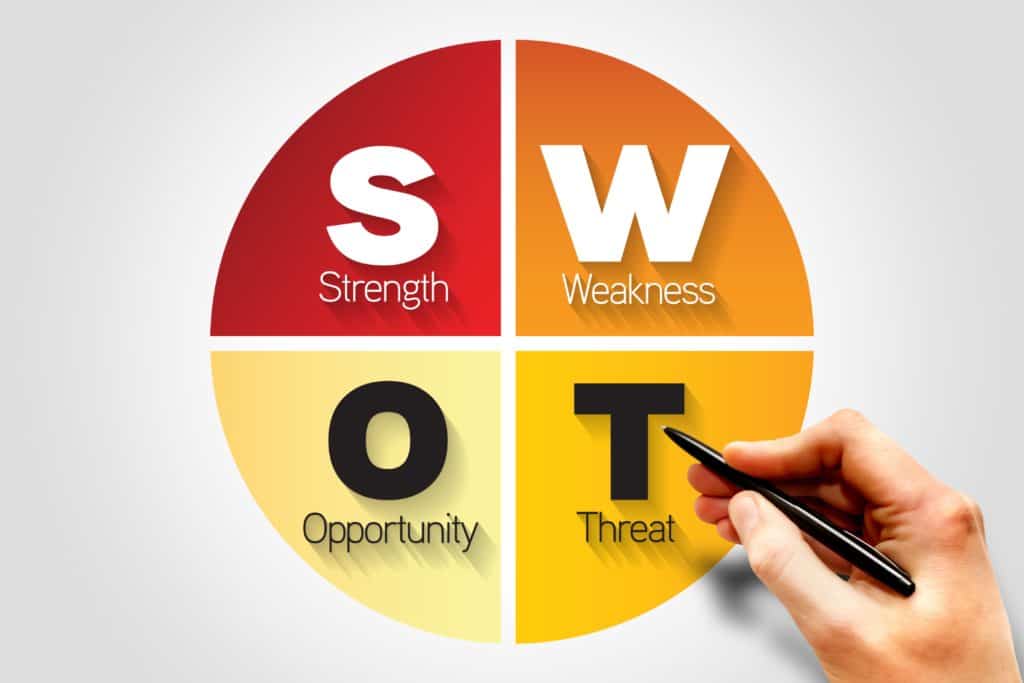
Why App Market Research is a vital part of marketing strategy and how to do it efficiently?
Why App Market Research is a vital part of marketing strategy and how to do it efficiently?
So, you’ve spent months pondering the ins and outs of developing your app. You know it will cost anything between $40,000 and $300,000. Still, you believe it’ll be a market disruptor second to none. The team is champing at the bit to get going, building a masterpiece that will undoubtedly contribute to your audience’s easier lifestyle. However, in the back of your mind, there’s a sense that one shouldn’t spend a development cent until there’s solid verification that you’re on the right track.
The best starting point – the one that has the power to springboard your operation beyond expectations – is app market research. In other words, it’s the “open sesame” to understand who precisely will respond to your brand, where they live, what they look like, and how they think and feel. Moreover, it will take you to the center of the market trends in your favor and expose those working against you. Finally, app market research’s ability to define customer pain points delivers an accurate vision of the features the app must represent to gain a competitive edge.
This article gives the reader an end-to-end overview of mobile app market research, clearing away confusion and misconceptions around the activity.
What is mobile app research?
The market research mobile app developers value most revolves around understanding the mobile customer experience (MCX) inside and out. Did you know that MCX is not one event but numerous touchpoints that drive the customer to download your brand? A single toxic touchpoint can derail the mobile customer journey (MCJ.). For example, not providing technical support to Hispanics in Spanish is one of the hundreds that can stop MCJs in their tracks. Indeed, once customers abandon your product for any reason, they’re unlikely to return. This endemic problem (known as customer churn) is the deadly enemy of vibrant, growing app development. Understanding how to conduct market research will get you to focus on robust touchpoints and avoid the ones that disintegrate audience interest.
Ask yourself this:
- Is my app launch timing spot on?
- How well does my app’s unique selling proposition (USP) align with customer pain points?
- Does my app execute my USP in the best possible manner? In other words, is it the resolution customers are looking for?
App market research should give you accurate answers to the crucial questions above.
Why mobile app research is crucial to your marketing success
Global smartphone users ranged around 6.5 billion in 2022, expected to escalate to 7.7 billion by 2027. Close your eyes for a moment and imagine what that means in connectivity via direct conversations, emails, app usage, and texts through these portable mini devices. Indeed, it’s a cell phone tsunami swamping every country on all continents, shaping lifestyles in 2022 (and beyond). So, an app idea can easily get lost in this cauldron of dynamic interaction unless one finds a way to wade through the noise to the mother lode – your responsive audience.
Two examples of research falling short are:
- The case of Kodak, the iconic photography, and videography company, collapsed like a pack of cards in 2012 when it filed for bankruptcy. Why? Because the management missed the transitory customer trend from the printed image to a digital one that started thirty-seven years earlier.
- Another was Blockbuster which owned 9,000 video-rental stores in the U.S. and employed 84,000 people globally. In addition, it boasted 65 million registered customers in the 1990s. With all that going for it, the company’s management didn’t see the move away from DVD entertainment staring them in the face. Here’s a quote from the CEO in 2008, Jim Keyes, that says it all:
“Neither RedBox nor Netflix are even on the radar screen in terms of competition. It’s more Wal-Mart and Apple.” Two years later, in 2010, Blockbuster filed for bankruptcy, and Netflix, in the same year, registered annual revenue of $61 billion.
Both the above indicate what can happen when the stakeholders of a business ignore the insights market research delivers. And your app is indeed a business, even though probably a startup. So now that you know the things that go haywire if you neglect to do the right stuff, let’s get into execution. We’re talking about compelling, groundbreaking methodologies in app market research.
Mobile app research using cutting-edge strategies
A. Get to understand your audience from top to bottom
Market segmentation is at the root of all audience definition exercises. Essentially it breaks down into three categories:
1. Demographic Segmentation – Obtained from libraries of information online and offline about communities and groups likely to buy your brand, reflecting the following (a few of many examples):
-
- Where they live.
- Their ages, religions, and languages.
- Incomes and occupations.
- Education levels.
- Genders.
- Marital status.
- Family size.
This research highlights the candidate markets to zone in on. For example, people with similar demographic characteristics often live in the same neighborhoods, shop the same way, enjoy the same entertainment, refer to each other for advice, and rely on similar lifestyle dynamics to get through the day. However, demographics are not nearly enough – you need more verification.
2. Behavioral Segmentation – A study of demographically defined market segments regarding how they behave. This vertical looks at things like preferences in:
-
- Entertainment.
- Sports.
- Shopping habits (i.e., online, offline, via app).
- Favorite brands.
- Hobbies.
- Paths followed in various lifestyle categories like dating, dining out, working, and dressing.
3. Psychographic Segmentation – the most challenging part of all methodologies, digging into why the audience does what it does. For example:
-
- Prejudices (logical or not)
- The influence of:
- Aspiration groups (people admired the most).
- Opinion leaders.
- Level of emotions when considering brand selections.
- Turnoffs (i.e., negative touchpoints).
- Turn-ons (i.e., touchpoints that encourage continuation on the MCJ).
- Understanding what a top-class MCX means to the customer.
- What type of event can make them jump to another brand?
- Rewards and features the audience considers meaningful.
- Rewards and features the audience considers cheesy or frivolous.
- How the respondents define “trust,” “loyalty,” and “respect.”
The big question arises, where do you obtain the segmentation data from?
In the modern era, the world is digitally the size of a village. So here are seven trustworthy resources extracted from a vast pool of entities that constantly investigate markets, analyze changing behavior, and measure metrics:
- Gartner Inc – a Stamford Ct. research and consulting firm – has an extensive library of statistics, articles, and documentation. The latter stretches across global technologies, applications, and companies, many of which are likely to overlap with your industry.
- Statista represents a massive database from almost every angle. At the last count, the research organization embraced 170 industries stationed in 150 countries. This entity offers a wealth of information translated into meaningful metrics.
- Google Trends is a free trend analysis tool that connects to vital Google and YouTube search terms. It’s a website designed by Google specifically to analyze the popularity of top search queries in Google Search by geography and language. In short, it provides behavioral insight into online customer behavior and connects it to crucial demographics. Moreover, the site relies on graphs to compare how different queries are trending by volume over time.
- Pew research The Pew Research Center is a Washington D.C. research entity and think tank that provides businesses with demographic, social, and the latest opinion insights.
- Gallup is a Washington-based analytics organization that focuses on information about the employee, customer, student, and citizen lifestyles and transformation trends over time. After accumulating data, Gallup publishes articles and podcasts to throw light on numerous market landscape aspects.
- SoGoSurvey is a research industry leader with structured data sources that can benefit many industries. They consult clients who believe in segmenting audiences at the lowest cost. Moreover, SoGoSurvey conducts customer focus group interviews that touch on deep emotions and thinking. The company’s team demonstrates expertise in structuring surveys customized to prove or disprove CX theories.
- Knoema is an open data platform and publisher that extends across multiple verticals to explore, manage, and visualize data crucial to marketing strategies.
Aside from the seven platforms above, there are valuable online resources in social media. Companies like Facebook, WhatsApp, YouTube, Instagram, and hundreds of industry-centric marketplaces have unique vantage points and audience overviews. Google the segments you’re interested in to get a torrent of valuable options coming your way.
The social media database is monolithic; it’s the foundation for attracting customers who want no wastage in their promotional spending. However, if anyone can provide behavioral trends of customers in every corner of the world, it’s social media. Indeed, the latter not only reacts to audience trends; they’re integral in changing them.
One of Instagram’s creations is a prime example:
- Many apps have locked on to their short video feature, allowing one to address audiences with a brand appeal from different directions.
- It provides a testing ground where you can measure responses to unique content, thus allowing companies to connect with prospects on an emotional level.
B. Know your competitors
Mobile devices create close to 55% of global web traffic. Thus, look into what your most prominent competitors are promoting. It may be a critical shortcut to finding out what’s behind successful app launches in your category.
- Legally monitoring competitors is a viable research initiative.
- If nothing else, it delivers food for thought to build a better MCX using a combination of the best brand features and the promotions you detect in the competitor circle.
As much as you watch others, they follow you – it’s a significant aspect of mobile app research.
So, get to grips with your competitors’ value propositions, respect their strong points, and capitalize on their weaknesses. As long as you’re not transgressing patent rights, competitor feature copying and enhancing is a fair practice. Look at their metrics, particularly the ones that boost ROI. While gathering information, do not take any claims or pieces of information for granted, even though they appear irrelevant.
Now for something that might surprise you. Research your indirect and direct competitors, implying a broad overview. Why? Because there’s no such thing as too much competitor input in developing market intelligence.
Twitter, Instagram, LinkedIn, and Pinterest are sites that regularly generate information about what leading brands are doing with them. They leverage the data to attract new customers, simultaneously highlighting crucial changes in competitive promotional strategies. They can tell stakeholders what’s working today and not so much anymore.
C. SWOT
SWOT (strengths, weaknesses, opportunities, and threats) is a concept as old as the hills but impressively revealing if deployed correctly.
- First off, as commented in the section above, evaluate your competitors’ SWOPs. It helps you to piggyback on their research, picking the best and rejecting the worst.
- Second, get into your own app launch SWOT and compare it to what’s already out there. That’s how you detect the gaps and formulate plans to close them. Anything you can do better and stay price competitive will earn you market traction.
D. Research isn’t static
The only sure thing about the markets is that they’ll change. How fast varies from situation to situation. However, MCX is dynamic:
- Customers continually look for something different from their brands.
- They subconsciously ask, “Does this brand appreciate my loyalty?” and “Is this message still aligning with my aspirations? – only two of many questions.
On the other side of the equation, progressive companies regularly ask customers the following insightful questions:
- Would you recommend our brand to your best friend?
- If yes, why?
- If not, why not?
So, there’s no substitute for placing yourself in the customers’ shoes. Get inside their heads to understand how they’re evaluating your USP. This continual self-searching plays into the belief that change is always hovering nearby. Whatever you plan today, no matter how compelling, can disappear faster than an Elon Musk rocket blasts into space. Simply put, don’t rest on your laurels.
Short survey feedback is crucial to success once you’ve grasped it for the first time. Complacency is a mark of arrogance, and market volatility has no tolerance for believing in sustainable superiority. There’s always a competitor so hungry that it will do anything to speed up your customer churn. Therefore, don’t let it get through the door by making mobile app market research an ongoing marketing strategy where you are continuously testing the resilience of your app features and segment approach.
After constructing a research-centric strategy, maximizing your strengths, protecting against threats, aiming at the lowest fruit on the tree, and downplaying weaknesses, take a step back. How does it look as an integrated package? Ask your staff and your customers what they think. Based on the feedback, adjust and finetune. Never stop asking and looking over your shoulder. Here are the critical questions that never leave your survey armory:
- Are we addressing the customers’ pain points better than anyone?
- If yes, do our customers know we do?
- If not, what are we doing about it?
- How has our value proposition changed?
- Do we like it where it is?
- If not, what’s the next step?
- How can we establish a meaningful difference long term?
- Does the data streaming through confirm our perceptions are correct?
Finally, get the entire team involved in mobile app research. Participation creates synergy, and the latter, in turn, pulls everyone’s commitment to higher levels. Let everyone contribute ideas and opinions on the data and research results. The more team brainpower focuses on “discovery,” the deeper your inroads to higher market share will be. Learn from your mistakes to make things better, and once better, don’t rest until you’re the best.
Conclusion
A successful app launch doesn’t arrive neatly packaged on your office doorstep. It takes blood, sweat, and tears to move from idea to launch and see growing conversions. Guesswork is easy, but there’s no substance in that. So, take a carefully considered road to develop the ultimate MCX and the most extended customer lifecycle (i.e., MCJ) imaginable. Retaining customers rests on doing the high-profile things better.
Fill in gaps by talking to ShyftUp – a leading global User Acquisition Agency. They’ll help you develop your app portfolio’s mobile app research program. ShyftUp focuses on two primary services:
- App Store Optimization (ASO) – unleashing the power of organic user growth by creating boosted visibility on the app stores.
- Paid User Acquisition – to help you grow your user base by converting your paid marketing budget into real users, thus revenue. ShyftUp specializes in Apple Search Ads and Google UAC channels.
How can stakeholders segment their mobile app market?
With demographic, psychographic, and behavioral methods to pinpoint target audiences.
What other research strategies work hand in hand with segmentation?
Competitor evaluation from corner to corner, and SWOT analysis, including your own.
How long does an app mobile research project last?
The correct answer is that it never ends. To address volatility, keep pace with change, so keep testing and don't rest on your laurels.
When should I start a mobile app research program?
Before developing the app, then step up momentum as you progress.
Why App Market Research is a vital part of marketing strategy and how to do it efficiently?
Why mobile app research is crucial to your marketing success
Mobile app research using cutting-edge strategies
A. Get to understand your audience from top to bottom
The big question arises, where do you obtain the segmentation data from?


